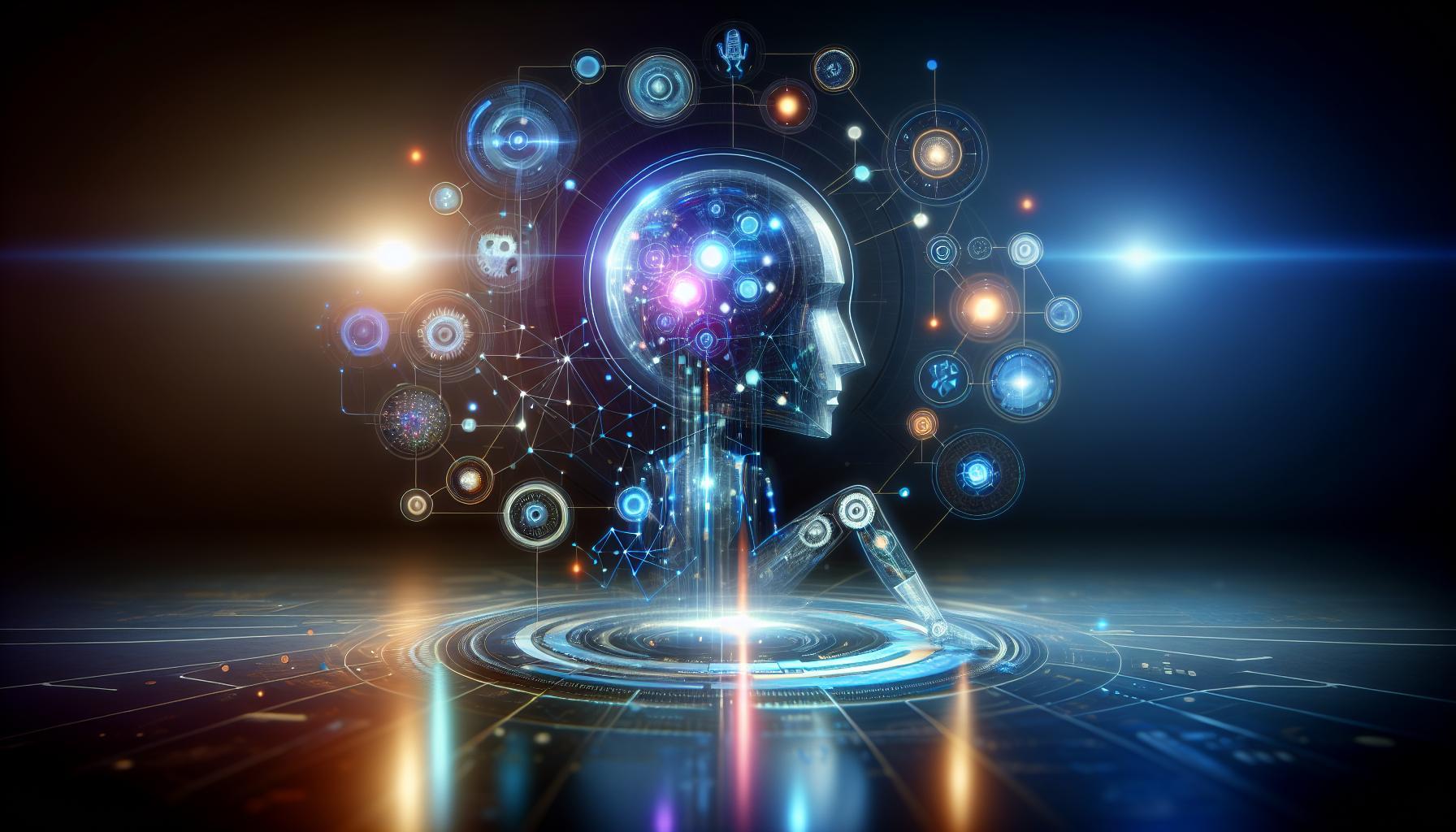Navigating social interactions can be challenging, particularly for individuals with autism and other communication difficulties. AI-powered social story generators offer a solution, crafting tailored narratives that illuminate social situations and behaviors. By utilizing these innovative tools, educators and caregivers can enhance understanding and improve social skills, making a meaningful difference in students’ lives.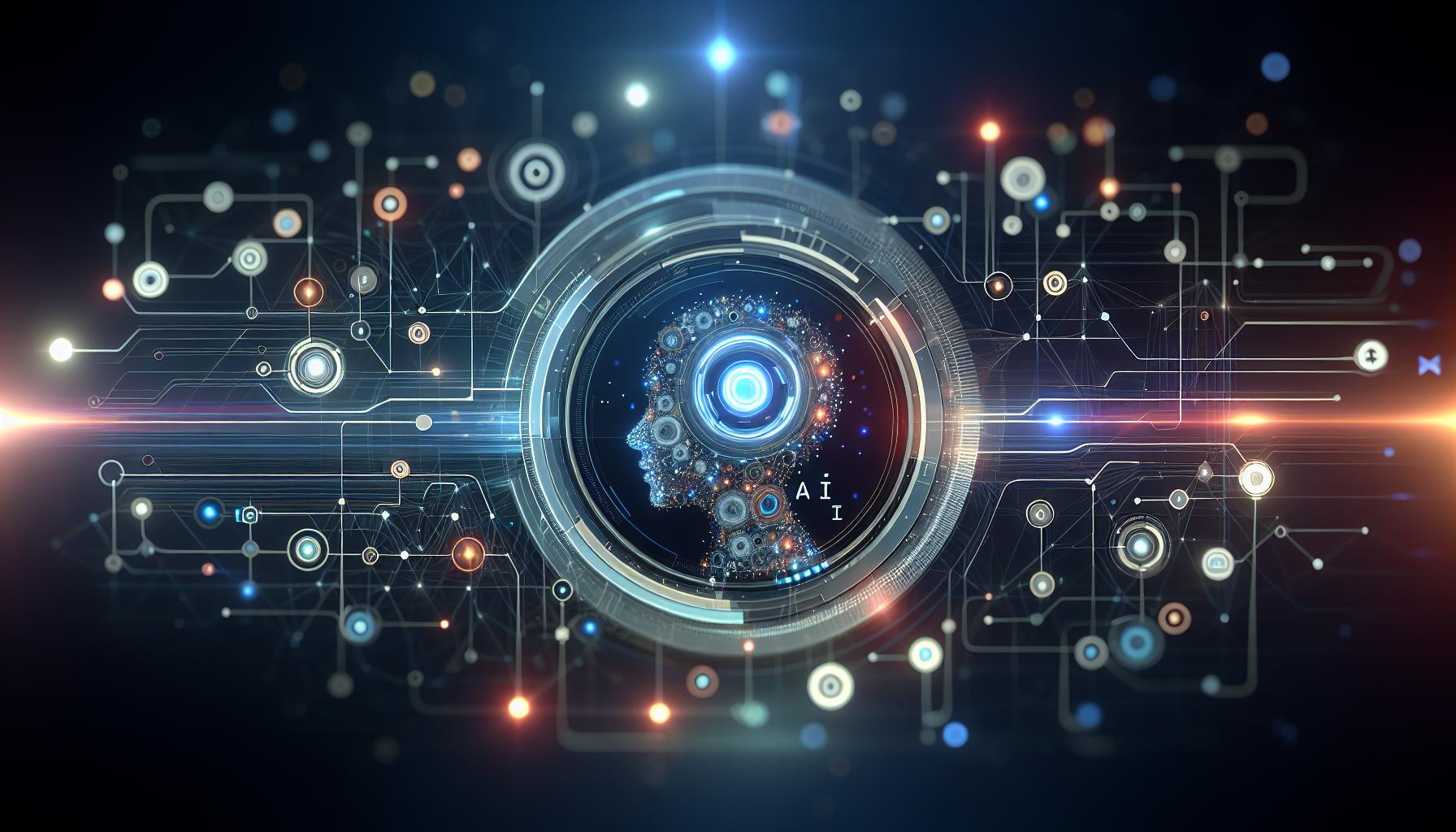
Understanding Social Stories: A Tool for Learning in Special Education
Social stories have emerged as an essential educational tool tailored for individuals with Autism and other special needs, effectively bridging the gap between understanding and behavior. These narratives, crafted through simple and relatable language, help convey social concepts, expectations, and coping strategies, thus fostering social skills and emotional understanding. By personalizing these stories, educators and caregivers can address specific situations faced by their learners, making the application of the AI Social Story Generator: Craft Narratives for Special Education a transformative practice in the classroom.
Components of Effective Social Stories
To ensure that social stories resonate with their audience, certain criteria must be met. Effective social stories typically include:
- Clear and Concise Language: Use simple, straightforward language that is easily understandable.
- Positive Tone: Focus on positive messages and outcomes to promote engagement.
- Visual Aids: Incorporate illustrations or images to help visualize the scenarios depicted in the story.
- Personalization: Tailor stories to reflect the individual’s experiences and emotions.
By integrating these elements into the narratives generated by the AI, teachers can produce high-quality resources that not only educate but also motivate learners to navigate social interactions with confidence.
Real-World Applications
In practice, social stories are versatile tools that can be utilized in various settings. For instance, a child struggling with transitions between activities can benefit from a story explicitly detailing the steps involved, from finishing one task to starting another. Similarly, stories addressing common scenarios such as participating in group activities, attending new settings, or dealing with feelings of frustration can empower students by equipping them with strategies to manage their responses.
| Scenario | Story Focus | Expected Outcome |
|---|---|---|
| Transitioning to a New Class | Steps for getting ready and moving to the new class | Reduced anxiety and smoother transition |
| Dealing with Peer Conflict | Ways to express feelings and seek help | Improved conflict resolution skills |
| Understanding Personal Space | Importance and examples of personal boundaries | Better social interactions and awareness |
The integration of digital solutions, such as the AI Social Story Generator: Craft Narratives for Special Education, further streamlines the process of creating tailored social stories. This innovation enables educators to quickly generate narratives suited to the diverse needs of their students, ensuring that important social skills are taught in a relatable and engaging manner. By leveraging these tools, the landscape of special education can become more inclusive and adaptable, ultimately leading to enhanced learning outcomes.
How AI Enhances Narrative Creation for Individual Needs
In the evolving landscape of education, particularly in special needs settings, the integration of artificial intelligence is revolutionizing the way narratives are crafted to meet the unique requirements of individual learners. Imagine a tool that can instantly generate personalized social stories, providing tailored content that addresses specific challenges faced by students. This is precisely what the AI Social Story Generator: Craft Narratives for Special Education offers—empowering educators and parents alike to enhance learning experiences through customized storytelling.
Personalization Through AI
AI has the capacity to analyze data points such as a child’s learning preferences, social skills deficits, and emotional needs, enabling the creation of highly personalized narratives. By adjusting character traits, settings, and storylines to reflect an individual’s experiences, these narratives can significantly improve engagement and comprehension. For instance:
- Visual learners might benefit from stories featuring vivid imagery and visual cues that help them grasp concepts more easily.
- Children with anxiety could be provided with narratives that include calming strategies and reassuring outcomes, reducing their fear of social interactions.
- Students with autism may receive narratives illustrating social scenarios, helping them to navigate social cues and interactions effectively.
Real-World Applications
Educators and therapists have already begun harnessing AI technology to craft effective lessons tailored to individual student needs. For example, a teacher could use an AI social story generator to help a child prepare for a new experience, such as attending a class outing. By generating a story that outlines what to expect, whom to interact with, and coping mechanisms for any anxiety, the student can feel more secure and ready to engage.
| Scenario | AI-Driven Narrative Focus | Expected Outcomes |
|---|---|---|
| Preparing for a new classroom | Introduce classroom layout, new peers, and structured routines | Increased comfort and adaptability in a new environment |
| Interacting with peers during group activities | Highlight sharing ideas, taking turns, and listening | Improved social skills and peer relationships |
| Handling disappointment during games | Teach resilience and strategies to cope with losing | Better emotional regulation and sportsmanship |
Through this personalized approach, the AI Social Story Generator: Craft Narratives for Special Education not only supports the educational journey of children facing challenges but also nurtures their emotional and social development. This technology equips educators with tools that foster empathy and understanding, improving both teaching strategies and student outcomes.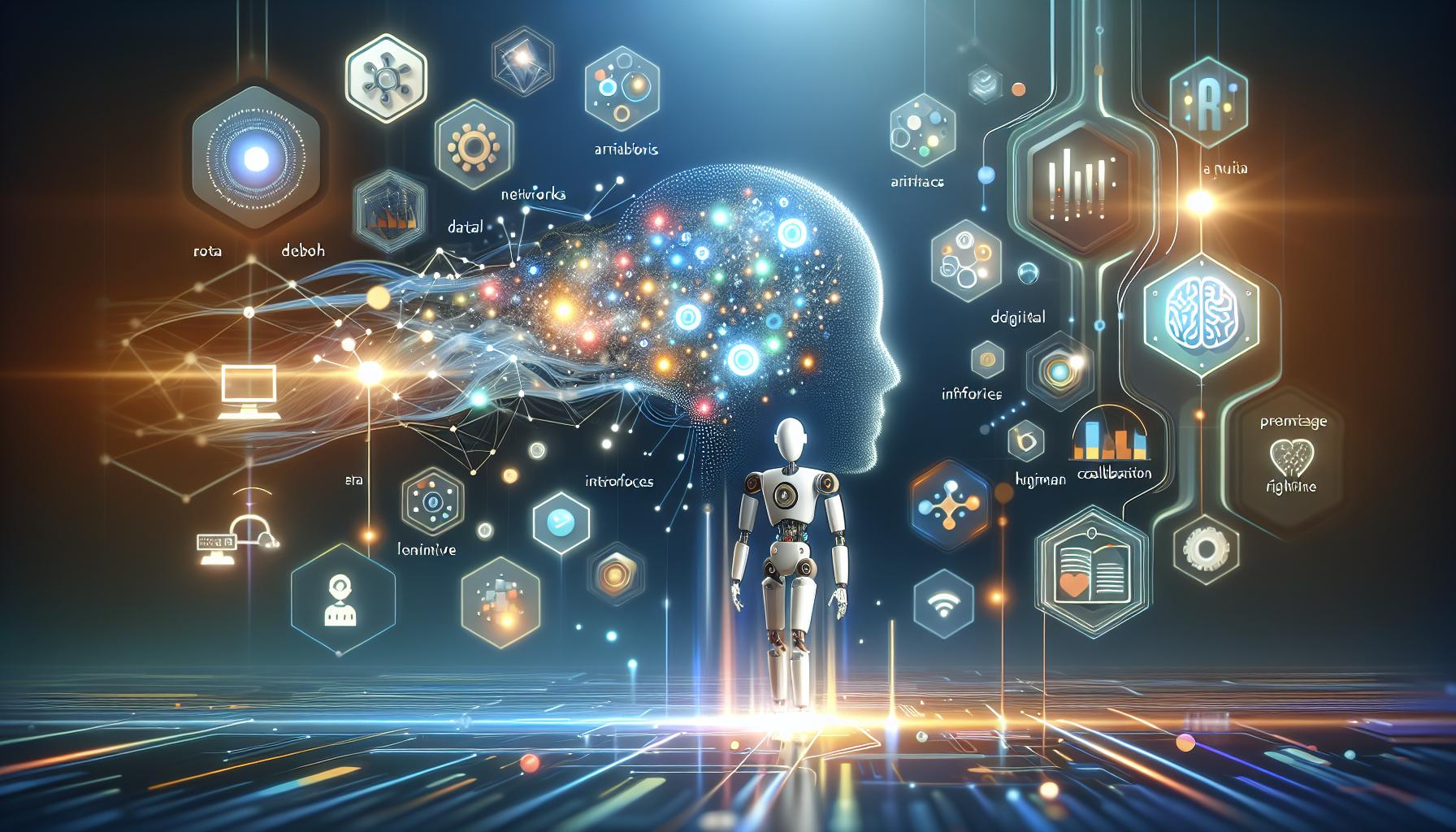
Key Features of an AI Social Story Generator: What to Look For
A well-designed AI Social Story Generator can significantly enhance the educational experience for students with special needs. These tools are crafted to create personalized narratives that help explain social situations, improve communication skills, and build confidence in various social interactions. When selecting an effective AI-driven social stories generator, there are several key features that educators and parents should prioritize.
User-Friendly Interface
A primary consideration is the ease of use. A straightforward interface allows educators to quickly generate stories without extensive training. Look for platforms that offer drag-and-drop functionality, intuitive navigation, and clear instructions. This ensures that users can focus on the content rather than getting bogged down by complex technology.
Customization Options
Every child is unique, and the ability to tailor stories to their specific needs is crucial. An effective generator should offer various customization options, including:
- Character Selection: Users should be able to choose from a diverse range of characters that represent different backgrounds and abilities, making the narratives relatable.
- Scenario Input: The option to input specific social situations or challenges the child may face helps create relevant and impactful stories.
- Visual Aids: Incorporating images or illustrations within the stories can aid comprehension and engagement.
Feedback Mechanisms
An ideal AI Social Story Generator should include feedback mechanisms to enhance learning outcomes. For instance, features that allow caregivers or educators to receive insights on how the child interacts with the stories can be invaluable. This could involve tracking progress or identifying which aspects of the story resonate best with the child, allowing for adjustments and improvements in future narratives.
Regular Updates and Community Support
A commitment to regular updates ensures that the generator stays relevant with new scenarios and features based on user feedback. Additionally, access to a community or forum where users can share stories, tips, and success stories can foster collaboration and provide valuable resources for improving the social narratives created through the generator.
Overall, choosing the right AI Social Story Generator means considering its usability, customization capabilities, feedback mechanisms, and community support. By focusing on these essential features, educators can create powerful narratives that cater to the needs of their students, ultimately supporting their social development.
Tailoring Stories: Personalization for Unique Learning Styles
In today’s diverse classrooms, recognizing and adapting to unique learning styles is crucial for effective education. Personalized narratives crafted through innovative tools can play a transformative role in addressing the various needs of students. The ability to generate tailored stories not only resonates with individual learners but also enhances understanding and retention. By utilizing an AI Social Story Generator, educators can create engaging, customized content that caters specifically to the diverse needs of students, especially those requiring special education support.
Why Personalization Matters
Personalization in storytelling allows educators to address the specific interests and learning preferences of each student. This approach transforms a generic lesson into a relatable and engaging experience. For instance, a social story about a student navigating a challenging social situation can be tailored to reflect their personal experiences and emotions, making it more impactful. Key benefits of personalized stories include:
- Increased engagement: When students see themselves in the narrative, they are more likely to connect with the material.
- Enhanced understanding: Tailored content can simplify complex concepts by breaking them down into relatable scenarios.
- Boosted confidence: Personalized stories can empower students by validating their feelings and experiences.
Practical Steps for Implementation
To effectively utilize an AI Social Story Generator for crafting narratives, educators should consider the following steps:
- Identify Learning Needs: Assess the individual learning styles and needs of students. Understanding these factors will help tailor stories that truly resonate.
- Gather Relevant Content: Collect personal anecdotes or specific situations students face in their daily lives. These elements can significantly enhance the authenticity of the stories.
- Generate and Customize: Utilize the AI Social Story Generator to create narratives, modifying them as needed to reflect the gathered insights.
- Deliver Thoughtfully: Present the stories in a manner that encourages discussion. Engaging students in a dialogue about the story can deepen their understanding and encourage reflection.
| Step | Action |
|---|---|
| 1. Identify Learning Needs | Assess students’ unique learning styles. |
| 2. Gather Relevant Content | Collect personal anecdotes and experiences. |
| 3. Generate and Customize | Create tailored stories using AI tools. |
| 4. Deliver Thoughtfully | Engage students in discussions around the narratives. |
By leveraging an AI Social Story Generator, educators can create personalized narratives that not only support learning but also foster a sense of belonging and understanding among students with diverse needs. This approach helps cultivate an environment where each learner feels recognized and valued, ultimately enhancing their educational experience.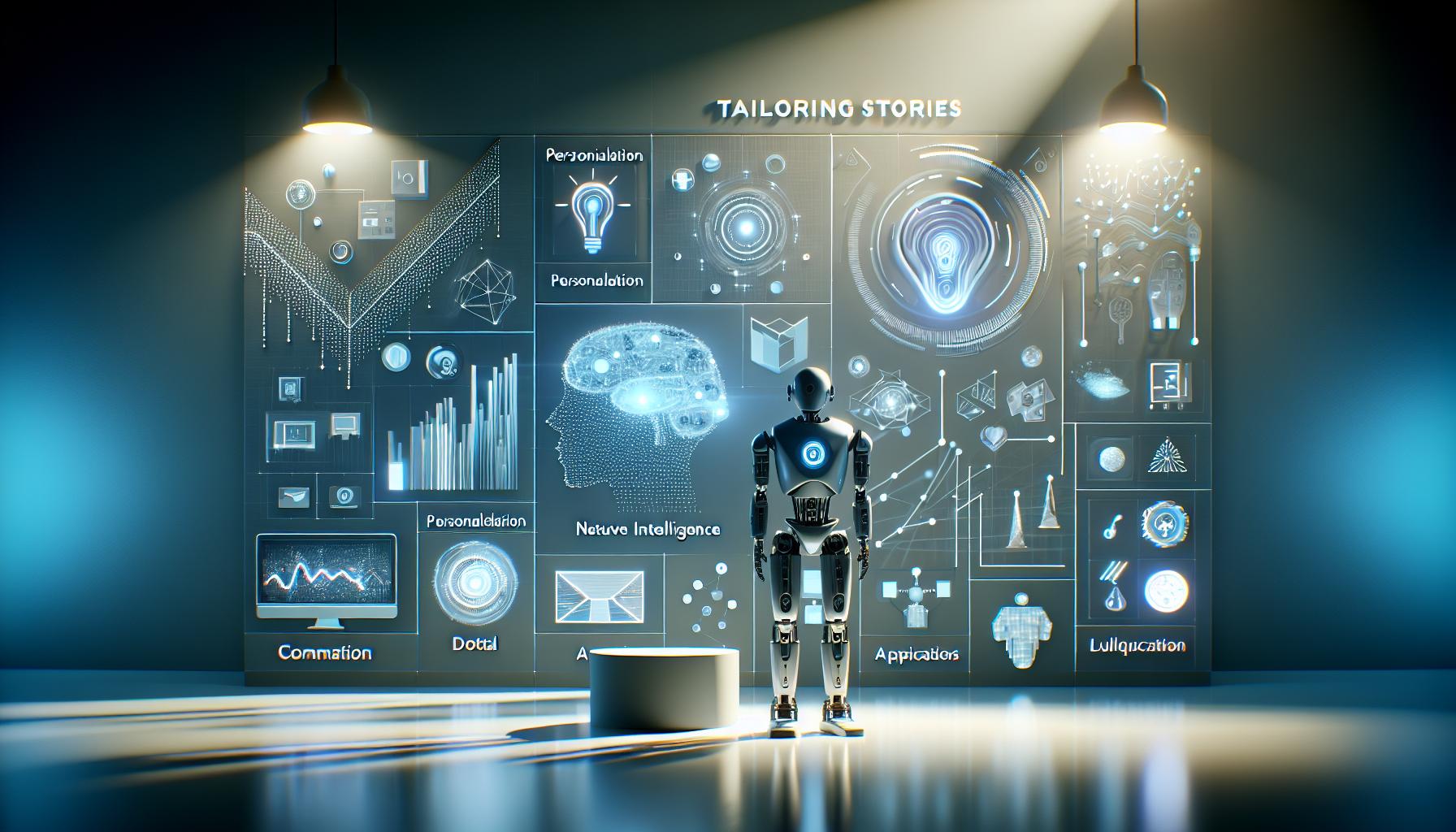
Practical Applications: Using AI-Generated Stories in the Classroom
Educational environments are continually evolving to meet diverse learner needs, and leveraging technology like AI provides innovative solutions. The use of an AI Social Story Generator opens up a wealth of opportunities for educators, particularly in special education settings. By generating tailored narratives, teachers can facilitate social skills development, enhance emotional understanding, and promote inclusivity among students with different learning styles and requirements.
Incorporating AI-generated stories into the classroom can transform how educators address various learning objectives. Here are some practical applications:
- Social Skills Development: Teachers can create personalized social stories that illustrate appropriate behaviors in various scenarios, such as sharing, waiting in line, or interacting with peers. This targeted approach can significantly enhance students’ understanding of social norms.
- Emotional Regulation: AI story generators allow educators to craft narratives focused on emotional literacy, helping students identify and express their feelings. By presenting relatable scenarios, students can explore emotions in a safe environment, fostering empathy and emotional intelligence.
- Individualized Learning: The flexibility of AI-generated content means that stories can be adapted to each student’s unique needs. For example, a teacher might generate stories that align with a student’s interests or learning pace, making lessons more engaging and effective.
- Collaboration and Inclusivity: By using AI-generated stories, teachers can include all students in discussions and activities. Story prompts can be used to encourage group discussions, allowing students to collaborate and share their insights, thereby building a supportive classroom community.
One effective implementation could involve a weekly storytelling session where students co-create a narrative using the AI tool. This collaborative approach not only develops creative skills but also enhances communication and teamwork. To track progress, educators might use a simple table format to assess learning outcomes related to social and emotional skills before and after integrating AI-generated stories:
| Skill | Pre-Integration Score | Post-Integration Score | Notes |
|---|---|---|---|
| Sharing | 3 | 5 | Improved communication with peers |
| Emotional Expression | 2 | 4 | More comfortable expressing feelings |
| Cooperation | 3 | 5 | Increased participation in group activities |
Utilizing the AI Social Story Generator in these ways not only enriches learning experiences but also fosters a more inclusive environment. Each generated narrative becomes a building block in a student’s social and emotional development, equipping them with essential life skills that extend beyond the classroom.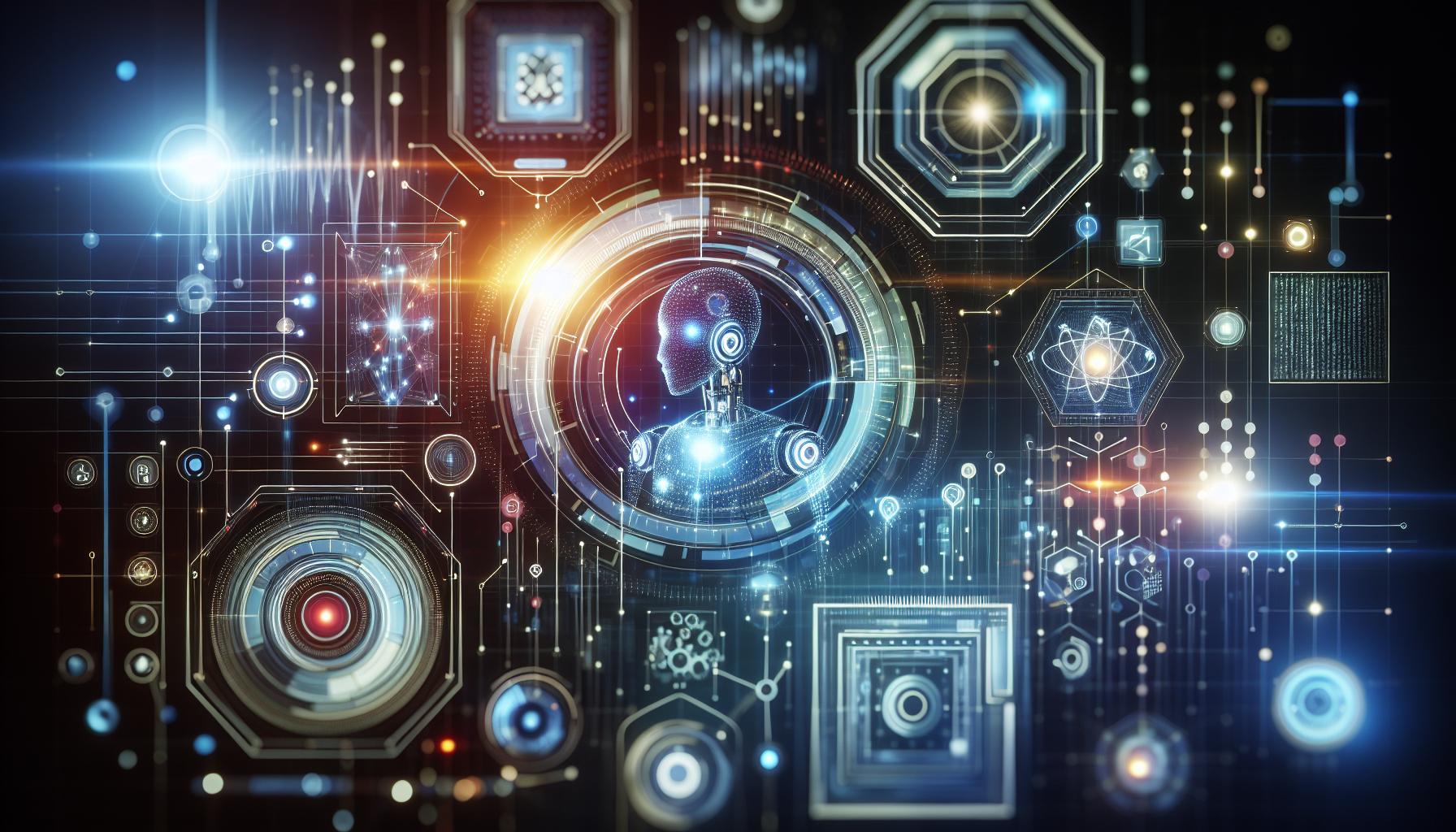
Collaborating with Educators: Integrating AI Tools Successfully
As technology evolves, the integration of artificial intelligence (AI) into educational settings is becoming increasingly important, especially in special education. With tools like the AI Social Story Generator, educators are empowered to craft narratives that cater specifically to the unique needs of students, ultimately fostering better communication and learning outcomes. However, the successful integration of these tools requires collaboration between educators and AI technology, ensuring that both parties enhance the educational experience rather than complicate it.
Understanding the Needs
To begin with, it is crucial for educators to clearly identify the needs of their students. Engaging in discussions with special education professionals and parents can provide valuable insights into the cognitive and emotional challenges that students may face. By understanding these needs, educators can effectively utilize AI tools to generate social stories that are both relevant and beneficial. Here are some practical steps for this phase:
- Conduct Surveys: Gather feedback from students, parents, and teachers to identify specific challenges.
- Develop a Plan: Create a structured approach to incorporating AI tools like the AI Social Story Generator in the learning process.
- Set Goals: Establish clear objectives for what educators hope to achieve with the integration of AI tools.
Collaborative Tool Selection
Once the needs are defined, selecting the appropriate AI tool becomes paramount. Not all tools are created equal, and their effectiveness can vary significantly based on the user experience and the educational context. When choosing an AI Social Story Generator, consider the following criteria:
| Criteria | Description |
|---|---|
| User-Friendly Interface | The tool should be intuitive and easy for both educators and students to navigate. |
| Customization Options | Look for generators that allow tailoring stories to address specific student needs or scenarios. |
| Accessibility Features | Ensure the tool is usable for students with various learning abilities and disabilities. |
| Support and Resources | Opt for tools that come with sufficient user support and educational resources. |
Professional Development and Training
Implementing AI tools effectively necessitates ongoing professional development. Educators should engage in training sessions to become proficient in using the AI Social Story Generator, allowing them to fully leverage its capabilities. Collaborating with tech specialists or participating in workshops can provide valuable insights and practical skills. Additionally, forming partnerships with local universities or educational technology organizations can offer further opportunities for learning and experimentation with these innovative tools.
By embracing collaboration and focusing on integrating AI tools effectively, educators can create a supportive and engaging learning environment for students in special education. The goal is not just to use technology but to enhance narratives that resonate with students and facilitate their growth and learning in meaningful ways.
Addressing Challenges: Overcoming Barriers with AI Storytelling
The integration of AI storytelling tools into special education settings has demonstrated significant potential in addressing communication barriers faced by students with diverse needs. Traditional methods of teaching social interactions can sometimes feel rigid or disconnected from a student’s unique experiences. However, with the advent of AI social story generators, educators can create personalized narratives that resonate more deeply with each student’s reality, improving both engagement and understanding.
Customizing Narratives for Individual Needs
A key advantage of utilizing an AI social story generator is the ability to tailor stories to fit the specific needs and situations of students. By inputting essential details such as the student’s interests, challenges, and social context, educators can produce stories that reflect real-life scenarios. This customization allows students to see themselves within the story, fostering a greater connection to the material. For instance, if a child struggles with sharing toys during playtime, an AI-generated story can illustrate social cues and appropriate behaviors in a relatable way.
- Engagement: Personalized stories promote higher levels of engagement.
- Understanding: Students can better grasp social concepts through relatable contexts.
- Confidence: Familiar narratives empower students to practice social skills in a safe environment.
Practical Implementation Strategies
Successfully leveraging AI storytelling in special education requires thoughtful implementation strategies. Educators should begin by identifying key social skills that need reinforcement, such as sharing, waiting for a turn, or expressing emotions. Once these skills are defined, teachers can use an AI social story generator to create multiple narratives that depict positive outcomes and effective strategies. Consistent use of these stories can help cement learning, as repetition aids memory retention.
Furthermore, integrating feedback from students on the stories can enhance the effectiveness of the narratives. Creating opportunities for students to discuss the stories, either in groups or one-on-one, allows for a deeper exploration of the themes and characters portrayed. This discussion not only reinforces the material but also provides students with a platform to express their thoughts and feelings, further enriching the learning experience.
| Social Skill | AI Story Theme | Desired Outcome |
|---|---|---|
| Sharing | Two friends play at the park | Understanding the importance of taking turns |
| Emotion Recognition | A day in school | Identifying and naming different feelings |
| Waiting | Line-up for lunch | Practicing patience in a social setting |
The transformative impact of AI social story generators not only helps students navigate their educational environment but also prepares them for interactions beyond the classroom. With creative and adaptive storytelling, the barriers that often hinder communication can be effectively dismantled, paving the way for improved social understanding and interpersonal relationships.
Inspiring Creativity: Encouraging Students to Engage with Their Narratives
Engaging students in their narratives can transform their educational experience, especially when they learn to express themselves through storytelling. The utilization of innovative tools like the AI Social Story Generator has made it easier than ever for teachers to inspire creativity among students with special educational needs. By leveraging this technology, educators can help students find their voice and craft narratives that reflect their unique perspectives and experiences.
Listening to Their Voices
Every student has a story to tell, and recognizing this is crucial in fostering a creative environment. Through the AI Social Story Generator, learners can develop narratives based on their experiences, emotions, and opinions. This interactive tool encourages exploration in various ways:
- Personalization: Students can create stories that resonate with their own lives, making the learning process personal and engaging.
- Empowerment: Allowing students to choose their themes and characters fosters a sense of ownership over their narratives.
- Engagement: The use of dynamic images and prompts can captivate students’ interest and inspire greater involvement.
Using Real-World Examples
Real-world connections can significantly enhance student engagement. Take, for instance, a classroom scenario where students are tasked with creating a narrative around a recent field trip. Using the AI Social Story Generator, they can input their observations, incorporate photos, and share their feelings about the experience. The result is a cohesive story that not only develops writing skills but also nurtures critical thinking and emotional intelligence.
To further illustrate this, consider these story development steps that educators can implement:
| Step | Description |
|---|---|
| 1. Brainstorm | Encourage students to jot down ideas and feelings they want to express. |
| 2. Draft | Guide students in crafting a rough draft using the AI tool to structure their thoughts. |
| 3. Share | Facilitate peer review sessions, allowing students to give and receive feedback. |
| 4. Present | Students can present their stories, enhancing public speaking skills and confidence. |
By incorporating the AI Social Story Generator into the classroom, educators can significantly impact their students’ ability to engage with their narratives. To encourage creativity and establish a collaborative learning atmosphere, provide resources and opportunities for students to share their stories, thereby reinforcing the idea that their voices matter and have the power to inspire.
Evaluating the Impact: Measuring Effectiveness of AI Social Stories
The rise of artificial intelligence in education is revolutionizing the way we approach learning challenges, particularly in specialized environments. One innovative application is the AI Social Story Generator, a tool tailored for special education that crafts personalized narratives aimed at aiding children in developing social skills, understanding emotions, and navigating everyday scenarios. However, implementing such tools brings forth a crucial concern: how do we evaluate their impact and measure their effectiveness?
Key Metrics for Success
To assess the effectiveness of AI-generated social stories, several key metrics should be considered:
- Engagement Levels: Measuring student engagement before and after the implementation of social stories can offer insight into their effectiveness. Are students actively participating in lessons that incorporate these narratives?
- Behavioral Improvements: Keeping track of behavioral changes in children can help determine if exposure to personalized social stories leads to better social interactions and emotional regulation.
- Academic Progress: Analyzing any correlation between the use of AI-generated social stories and improvements in academic performance can help quantify their educational value.
- Feedback from Educators and Parents: Collecting qualitative feedback from those directly involved provides valuable context and insights that numbers alone cannot convey.
Utilizing Data for Continuous Improvement
To ensure that the AI Social Story Generator remains effective, data collection should be systematic and ongoing. Educators can utilize a simple framework to compile data, which may include running periodic surveys or taking notes during interactions based on narratives created by the tool. Here’s a proposed format for tracking student responses and behaviors:
| Date | Story Title | Initial Response (1-5) | Behavioral Change Observed (Yes/No) | Comments/Feedback |
|---|---|---|---|---|
| XX/XX/XXXX | Understanding Emotions | 4 | Yes | Increased recognition of emotions |
| XX/XX/XXXX | Sharing Toys | 5 | No | Still struggles with sharing |
By identifying trends in data collected over time, educators can not only gauge the immediate impact but also refine the narratives generated by the AI tool, tailoring them to better suit the specific needs of their students. This adaptability ensures that social stories remain relevant, engaging, and ultimately more effective in achieving learning objectives.
In conclusion, while the AI Social Story Generator presents a promising advance in special education, its successful integration hinges on careful evaluation and adjustment based on measurable outcomes. By focusing on student-centered data analysis, schools can harness the full potential of this innovative technology, fostering environments where children thrive socially and academically.
Frequently asked questions
What is an AI Social Story Generator: Craft Narratives for Special Education?
An AI Social Story Generator is a digital tool designed to create engaging narratives tailored for individuals with special educational needs. These stories help with social understanding by illustrating situations, responses, and expected behaviors in a relatable format.
By utilizing artificial intelligence, these generators create customized stories based on user inputs. This personalization makes the stories more relevant and effective in teaching social skills. Educators and parents can use these tools to enhance learning experiences in a supportive manner.
How does an AI Social Story Generator work?
An AI Social Story Generator functions using natural language processing (NLP) and machine learning algorithms to understand user prompts and generate relevant narratives. This process transforms simple inputs into structured stories that serve educational purposes.
For example, a user might input a specific situation, such as “going to a new school,” and the generator will create a story that describes what a child can expect. This method fosters a better understanding of social interactions, easing potential anxieties about new experiences.
Why use an AI Social Story Generator in special education?
Using an AI Social Story Generator in special education provides several benefits, including tailored content that meets individual learning needs. These tools can create stories that address specific challenges faced by students, making learning more effective and engaging.
Furthermore, custom stories can help build communication skills and improve social interactions. By addressing unique scenarios, students can visually and verbally practice social skills in a safe environment. This targeted approach can enhance their confidence and understanding in real-life situations.
Can I customize stories with an AI Social Story Generator?
Yes, most AI Social Story Generators allow for extensive customization. Users can input specific details about the child’s preferences, challenges, and desired outcomes, resulting in personalized narratives that resonate with their experiences.
For instance, a parent could focus on a child’s fear of loud noises by creating a story that describes visiting a busy restaurant. Customized stories can significantly enhance emotional connections to the content, thereby increasing learning engagement.
What types of stories can be created with an AI Social Story Generator?
An AI Social Story Generator can create a wide range of stories, including those focusing on daily routines, social interactions, specific challenges, and positive behaviors. This versatility helps meet diverse educational objectives.
For example, stories can illustrate how to greet someone, how to share toys, or how to deal with disappointment. The variety not only aids in social skill development but also supports emotional regulation, making it a valuable resource in special education.
Where can I find an AI Social Story Generator?
AI Social Story Generators can be found online through various platforms. Websites like Musely.ai offer accessible tools for creating custom social stories without requiring extensive technical knowledge.
Additionally, other platforms provide free versions that allow users to create stories instantly. These resources empower educators and parents by providing easy-to-use tools that enhance learning and support for children with special needs.
Are there specific benefits of using AI for social story generation?
Utilizing AI for social story generation offers significant benefits, including speed, personalization, and accessibility. An AI Social Story Generator can produce tailored content quickly, allowing for immediate support in urgent situations.
Moreover, the adaptability of AI means that stories can be updated or altered as students progress in their learning. This continuous improvement helps ensure that the content remains relevant and effective in addressing evolving developmental needs.
In Summary
In summary, AI Social Story Generators are invaluable tools for educators and caregivers working with individuals in special education. These platforms, such as Easy-Peasy.AI and Writify.AI, allow the creation of personalized narratives that address specific social situations and behaviors, promoting better understanding and interaction in everyday environments. By simplifying complex concepts and engaging users with tailored storytelling, these generators not only facilitate learning but also foster emotional connections.
We encourage you to explore these resources further, as they can empower you to make a meaningful impact in the lives of those you support. Dive deeper into how these tools can transform the way social stories are crafted and utilized, enriching learning experiences and enhancing communication. Engage with these AI solutions today and witness the positive changes they can bring to social skills development.


